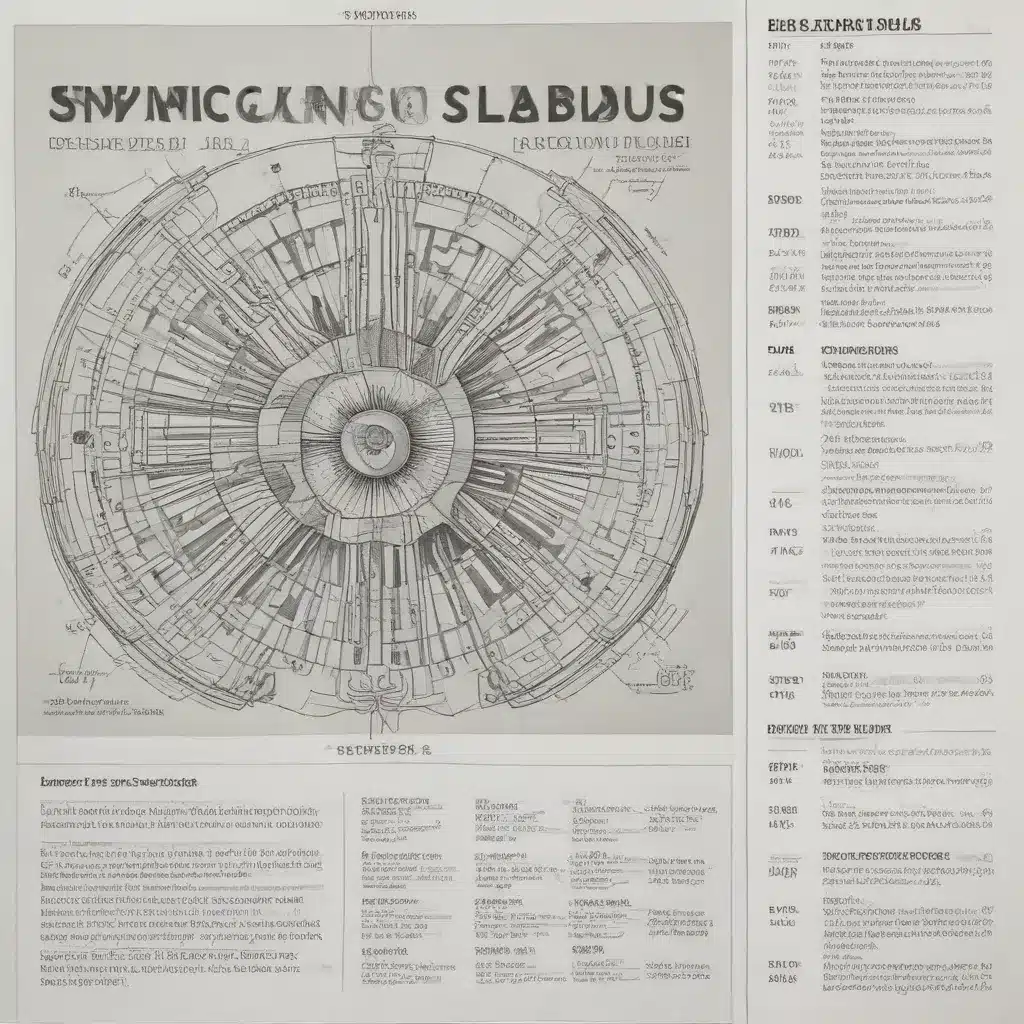
Understanding the Design Curriculum for Senior Students
As an experienced IT professional, I’ve had the privilege of working with individuals from diverse educational backgrounds. Among them, senior students pursuing design-focused studies have always piqued my interest, as their technological prowess and creative problem-solving abilities often prove invaluable in the fast-paced world of information technology.
In this comprehensive guide, we’ll delve into the Design General senior syllabus, exploring the key components, learning outcomes, and practical applications that can benefit IT professionals like ourselves. By understanding the depth and breadth of this curriculum, we can better collaborate with design-oriented individuals, leverage their unique skill sets, and ultimately enhance the technological solutions we provide.
Foundational Design Principles and Processes
At the core of the Design General senior syllabus lies a strong emphasis on the fundamentals of the design process. Students are introduced to a structured approach that encompasses the following stages:
- Investigating: Learners are trained to thoroughly research and analyze design problems, gathering relevant data and insights to inform their decision-making.
- Ideating: Students engage in creative ideation, exploring a diverse range of solutions through sketching, prototyping, and iterative refinement.
- Producing: Learners then translate their ideas into tangible design outcomes, utilizing both traditional and digital design tools and techniques.
- Evaluating: The final stage involves a critical evaluation of the design solutions, assessing their effectiveness, user experience, and overall impact.
This structured approach not only equips students with a methodical problem-solving mindset but also fosters their ability to adapt to the ever-evolving technological landscape. As IT professionals, we can leverage these design thinking skills to enhance our own problem-solving strategies, leading to more innovative and user-centric solutions.
Emphasis on Multidisciplinary Collaboration
The Design General senior syllabus recognizes the inherent interconnectedness of various disciplines, particularly in the realm of technology. Students are encouraged to collaborate with peers from diverse backgrounds, such as computer science, engineering, and marketing, to address complex design challenges.
This cross-pollination of ideas and expertise enables students to develop a holistic understanding of the design process, considering the technical feasibility, user needs, and business implications of their solutions. As IT professionals, we can greatly benefit from this collaborative mindset, fostering interdisciplinary partnerships that lead to more comprehensive and impactful technological innovations.
Mastering Design Tools and Techniques
The Design General senior syllabus places a strong emphasis on the development of practical skills, ensuring students are well-versed in the latest design tools and techniques. From proficiency in industry-standard software like Adobe Creative Cloud to competence in emerging technologies like augmented reality and data visualization, these learners are equipped to tackle a wide range of design-related tasks.
As IT professionals, we can leverage the design-oriented skills of these senior students to enhance our own technological solutions. By collaborating with them, we can seamlessly integrate visually appealing and user-friendly design elements into our projects, making them more engaging and accessible to our target audiences.
Fostering Design Thinking in IT Solutions
One of the most valuable aspects of the Design General senior syllabus is its focus on cultivating a design thinking mindset. This approach encourages students to empathize with end-users, frame problems from multiple perspectives, and explore innovative solutions through iterative experimentation.
As IT professionals, we can apply these design thinking principles to our own work, ensuring that the technological solutions we develop are not only technically sound but also user-centric and responsive to the evolving needs of our clients and customers. By embracing this design-oriented mindset, we can create more intuitive, engaging, and impactful IT solutions that truly resonate with our target audience.
Aligning IT and Design for Holistic Problem-Solving
The Design General senior syllabus recognizes the importance of aligning technological capabilities with design-driven insights. Students are encouraged to explore the intersection of IT and design, leveraging their understanding of both domains to tackle complex problems and create innovative solutions.
By understanding the nuances of this curriculum, we as IT professionals can more effectively collaborate with design-oriented individuals, fostering a synergistic relationship that combines technical expertise with creative problem-solving. This alignment can lead to the development of cutting-edge technologies that not only function flawlessly but also provide a seamless and delightful user experience.
Empowering Senior Students as IT Innovators
The Design General senior syllabus equips students with a unique blend of technical skills, creative problem-solving, and an entrepreneurial mindset. These learners are primed to become valuable assets in the ever-evolving world of information technology, capable of contributing to the development of innovative and user-centric solutions.
As IT professionals, we have the opportunity to engage with these design-oriented senior students, mentoring them, and leveraging their expertise to drive our own technological initiatives forward. By fostering these collaborative relationships, we can not only enhance our own capabilities but also contribute to the professional growth and development of the next generation of IT innovators.
Conclusion: Embracing the Design-IT Synergy
In the dynamic and rapidly changing world of information technology, the need for a comprehensive understanding of design principles and processes has never been more crucial. The Design General senior syllabus provides a solid foundation for students to develop the skills and mindset necessary to thrive in the ever-evolving technological landscape.
By familiarizing ourselves with the intricacies of this curriculum, we as IT professionals can better collaborate with design-oriented individuals, harness their unique talents, and create technological solutions that are not only functionally robust but also visually appealing and user-centric. This synergy between IT and design will undoubtedly lead to the development of innovative, impactful, and truly transformative technological advancements.
To learn more about the Design General senior syllabus and explore ways to leverage its insights in your own IT endeavors, I encourage you to visit the IT Fix blog for additional resources and expert guidance.












